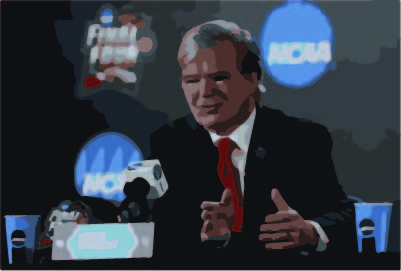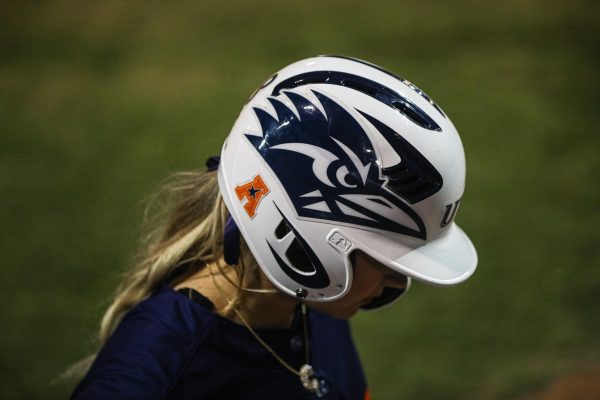To the NCAA, talk is cheap, action is needed


Mark Emmert became the acting president of the NCAA in 2010. Emmert previously served as the president of the University of Washington from 2004-2010.
April 6, 2021
On Monday, March 18, University of Oregon forward Sedona Prince posted a video on TikTok and Twitter highlighting a vast disparity in the weight room accommodations between the men’s and women’s NCAA Division I Basketball Championships taking place in Indianapolis and San Antonio, respectively. Compared to the men’s weight room, which was fully stocked and took up what looked like an entire conference room, the women were afforded just a single set of dumbbells. In the ensuing days, more examples of inequity were shown, ranging from the catering to the swag bags and even the types of COVID-19 tests being administered to the players.
There is no excuse when we’re living in the 21st century that we should still deal with these issues. In a year where the women’s tournament provided such great basketball, in many instances producing better finishes than the men’s tournament, it’s a disservice to these women that we have to talk about the inequity they still face in college sports. These revelations led to widespread outrage in the national media and with good reason. In the aftermath, the NCAA has realized how absurd the disparity was during this tournament and has adopted a very apologetic tone.
In a press conference on Wednesday, March 31, NCAA President Mark Emmert had this to say, “When you lay the men’s and women’s championships side by side, as has been made clear over the past weeks, it is pretty self-evident that we dropped the ball in the supporting our women’s athletes.” Emmert went on to state that the NCAA is committed to not letting such a situation occur again. “We run 90 national championships. Forty-five of them are women’s championships. We need to make sure that those events, going forward always, we have to make sure that those events are unequivocally the pinnacle, the exemplar of the way we treat men and women in those championships. That is not what we did here.”
While the NCAA and President Emmert can release all of these statements, they’re just words. Without action, none of what they say means anything. If concrete steps aren’t taken in improving the equity between men’s and women’s college sports in the aftermath of this, the media firestorm will die down, and this issue will disappear from the headlines until the next incident brings it back up again.
Emmert has promised that steps will be taken, saying, “We need to make sure that we understand fully not just what occurred just here in San Antonio but what policies and practices and structures and resource allocations need to be changed going forward so that we know without a doubt that there’s gender equity across our championships.”
Now an argument can be made that the men’s tournament generates far more revenue for college athletics than the women’s tournament does, and thus it’s fine that they have better accommodations. This position is a perfectly acceptable one if this were professional sports, but as the NCAA likes to remind us so often, these are student-athletes. The entire basis for Title IX in college sports is to ensure fair and equitable treatment between men’s and women’s programs and eliminate revenue from the equation when considering what is fair and equitable.
The ball is firmly in the NCAA’s court. If they truly care about equity between men’s and women’s college sports, this incident should be the last time such a disparity ever occurs. This isn’t just related to a question of men’s and women’s basketball; every college sport, regardless of gender, deserves equity of treatment. This is the modern era, and it’s time for the NCAA to start living in it.











